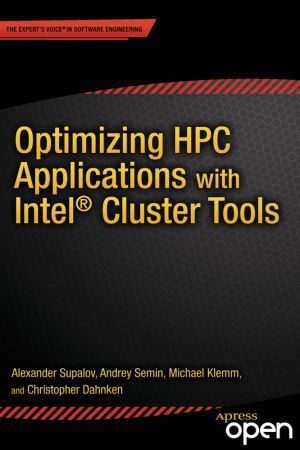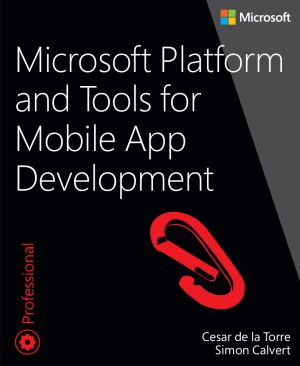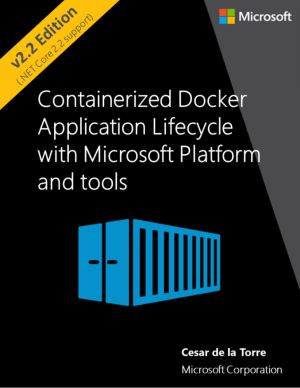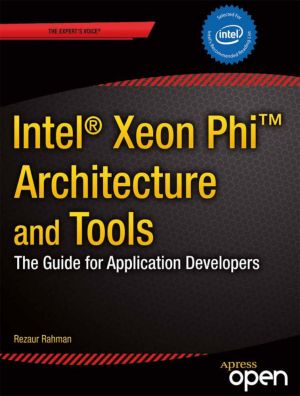Intel Xeon Phi Coprocessor Architecture and Tools
The Guide for Application Developers
by Rezaur Rahman
DescriptionTable of ContentsDetailsHashtagsReport an issue
Xeon Phi is at the heart of world's fastest commercial supercomputer, which thanks to the massively parallel computing capabilities of Intel Xeon Phi processors coupled with Xeon Phi coprocessors attained 33.86 teraflops of benchmark performance in 2013. Extracting such stellar performance in real-world applications requires a sophisticated understanding of the complex interaction among hardware components, Xeon Phi cores, and the applications running on them.
In this book, Rezaur Rahman, an Intel leader in the development of the Xeon Phi coprocessor and the optimization of its applications, presents and details all the features of Xeon Phi core design that are relevant to the practice of application developers, such as its vector units, hardware multithreading, cache hierarchy, and host-to-coprocessor communication channels. Building on this foundation, he shows developers how to solve real-world technical computing problems by selecting, deploying, and optimizing the available algorithms and data structure alternatives matching Xeon Phi's hardware characteristics. From Rahman's practical descriptions and extensive code examples, the reader will gain a working knowledge of the Xeon Phi vector instruction set and the Xeon Phi microarchitecture whereby cores execute 512-bit instruction streams in parallel. 






Book Description
Intel Xeon Phi Coprocessor Architecture and Tools: The Guide for Application Developers provides developers a comprehensive introduction and in-depth look at the Intel Xeon Phi coprocessor architecture and the corresponding parallel data structure tools and algorithms used in the various technical computing applications for which it is suitable. It also examines the source code-level optimizations that can be performed to exploit the powerful features of the processor.Xeon Phi is at the heart of world's fastest commercial supercomputer, which thanks to the massively parallel computing capabilities of Intel Xeon Phi processors coupled with Xeon Phi coprocessors attained 33.86 teraflops of benchmark performance in 2013. Extracting such stellar performance in real-world applications requires a sophisticated understanding of the complex interaction among hardware components, Xeon Phi cores, and the applications running on them.
In this book, Rezaur Rahman, an Intel leader in the development of the Xeon Phi coprocessor and the optimization of its applications, presents and details all the features of Xeon Phi core design that are relevant to the practice of application developers, such as its vector units, hardware multithreading, cache hierarchy, and host-to-coprocessor communication channels. Building on this foundation, he shows developers how to solve real-world technical computing problems by selecting, deploying, and optimizing the available algorithms and data structure alternatives matching Xeon Phi's hardware characteristics. From Rahman's practical descriptions and extensive code examples, the reader will gain a working knowledge of the Xeon Phi vector instruction set and the Xeon Phi microarchitecture whereby cores execute 512-bit instruction streams in parallel.
This open book is licensed under a Creative Commons License (CC BY-NC-ND). You can download Intel Xeon Phi Coprocessor Architecture and Tools ebook for free in PDF format (6.6 MB).
Table of Contents
Part 1
Hardware Foundation: Intel Xeon Phi Architecture
Chapter 1
Introduction to Xeon Phi Architecture
Chapter 2
Programming Xeon Phi
Chapter 3
Xeon Phi Vector Architecture and Instruction Set
Chapter 4
Xeon Phi Core Microarchitecture
Chapter 5
Xeon Phi Cache and Memory Subsystem
Chapter 6
Xeon Phi PCIe Bus Data Transfer and Power Management
Part 2
Software Foundation: Intel Xeon Phi System Software and Tools
Chapter 7
Xeon Phi System Software
Chapter 8
Xeon Phi Application Development Tools
Part 3
Applications: Technical Computing Software Development on Intel Xeon Phi
Chapter 9
Xeon Phi Application Design and Implementation Considerations
Chapter 10
Application Performance Tuning on Xeon Phi
Chapter 11
Algorithm and Data Structures for Xeon Phi
Chapter 12
Xeon Phi Application Development on Windows OS
Appendix A
OpenCL on Xeon Phi
Appendix B
Virtual Shared Memory Programming on Xeon Phi
Book Details
Title
Intel Xeon Phi Coprocessor Architecture and Tools
Subject
Computer Science
Publisher
Apress
Published
2013
Pages
220
Edition
1
Language
English
ISBN13
9781430259268
ISBN10
1430259264
ISBN13 Digital
9781430259275
ISBN10 Digital
1430259272
PDF Size
6.6 MB
License

Related Books

Optimizing HPC Applications with Intel Cluster Tools takes the reader on a tour of the fast-growing area of high performance computing and the optimization of hybrid programs. These programs typically combine distributed memory and shared memory programming models and use the Message Passing Interface (MPI) and OpenMP for multi-threading to achieve...

Architecture and the Novel under the Italian Fascist Regime discusses the relationship between the novel and architecture during the Fascist period in Italy (1922-1943). By looking at two profoundly diverse aesthetic phenomena within the context of the creation of a Fascist State art, Billiani and Pennacchietti argue that an effort of construction,...

This open book is about exploring interesting borderline cases of art. It discusses the cases of gustatory and olfactory artworks (focusing on food), proprioceptive artworks (dance, martial arts, and rock climbing qua proprioceptive experiences), intellectual artworks (philosophical and scientific theories), as well as the vague limits between pain...

Understanding and creating a mobile app development strategy is an important process for today's development decision-makers opening up new business opportunities or empowering employees to be more productive with new capabilities. Microsoft defines an end-to-end platform for the agile creation of mobile apps that can target any platform (iOS,...

This book provides end-to-end guidance on the Docker application development lifecycle with Microsoft tools and services while providing an introduction to Docker development concepts for readers who might be new to the Docker ecosystem. This way, anyone can understand the global picture and start planning development projects based on Docker and M...

The number of Android devices running on Intel processors has increased since Intel and Google announced, in late 2011, that they would be working together to optimize future versions of Android for Intel Atom processors. Today, Intel processors can be found in Android smartphones and tablets made by some of the top manufacturers of Android devices...

